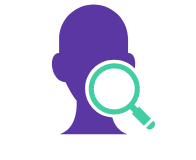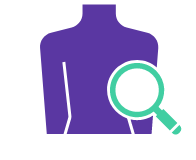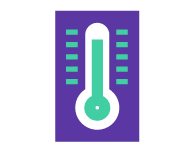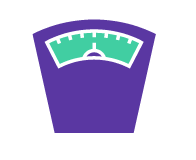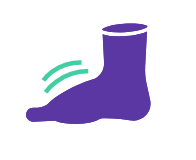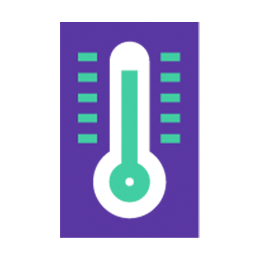Overlapping symptoms can make diagnosis difficult

The road to diagnosis can be full of twists and turns
Raise awareness about iMCD
Share now to help us raise awareness so that people who might be suffering from this condition can get a proper diagnosis and receive the right treatment.
Sign up for more on iMCD
"*" indicates required fields
By checking the adjacent box, you agree to allow EUSA Pharma to collect the information provided and to be contacted by EUSA Pharma in the future regarding its IL-6 neutralizing products and related disease education.
By submitting this form, you agree to allow EUSA Pharma to collect the information provided and to be contacted directly by a EUSA Pharma sales representative. Your information will not be used for any other purpose than for a representative to respond to your information request, or for us to send you other EUSA Pharma updates if you have registered to receive them.
EUSA Pharma will not sell, rent, or otherwise distribute your name and any personally identifiable information outside of EUSA Pharma. EUSA Pharma will only use your information in accordance with its Privacy Policy.
Your report
A diagnosis of idiopathic multicentric Castleman disease (iMCD) requires the presence of multiple swollen or enlarged lymph nodes. In some patients, the swollen lymph nodes may not be visible and may require imaging tests to confirm their presence. These symptoms alone are not enough to diagnose iMCD, as they could be signs of other diseases.
Talk to your doctor if you have any questions about this report.
Additional information about iMCD is available for healthcare professionals at KnowiMCD.com/HCP.
To protect your privacy, KnowiMCD.com does not save any of your information. Please be sure to download, save, and/or print this report.
Healthcare professionals can find information about the latest diagnostic criteria and treatment options by visiting
Your report
A diagnosis of idiopathic multicentric Castleman disease (iMCD) requires the presence of multiple swollen or enlarged lymph nodes. In some patients, the swollen lymph nodes may not be visible and may require imaging tests to confirm their presence. These symptoms alone are not enough to diagnose iMCD, as they could be signs of other diseases.
Talk to your doctor if you have any questions about this report.
Additional information about iMCD is available for healthcare professionals at KnowiMCD.com/HCP.
To protect your privacy, KnowiMCD.com does not save any of your information. Please be sure to download, save, and/or print this report.
Possible tests
In order to confirm a diagnosis of iMCD, a doctor will need to perform tests to detect the presence of multiple swollen lymph nodes.
- Physical examination
- Lab tests—blood or urine test
- Imaging tests—CT scan, x-ray, MRI, PET scan
- Excisional biopsy
By performing some of the above-mentioned tests, a doctor will be able to eliminate the possibility of autoimmune, cancerous, and infectious diseases. An excisional biopsy of the enlarged lymph node can confirm the diagnosis of iMCD.
The road to diagnosis
iMCD is a rare disease that can be difficult to diagnose because it can mimic so many other diseases. It may take a while to receive an accurate diagnosis because your doctor must rule out several different conditions before suspecting iMCD.
You may start your diagnosis journey at your primary care physician’s office, where you may be referred to a specialist.
Preparing for your appointment
Here are some tips to help you have a conversation with your doctor:
- Write down any symptoms you’ve experienced, even if they may seem unrelated
- Share the results of this Symptom Checker with your doctor
By performing some of the above-mentioned tests, a doctor will be able to eliminate the possibility of autoimmune, cancerous, and infectious diseases. An excisional biopsy of the enlarged lymph node can confirm the diagnosis of iMCD.
Start the conversation
Here are some tips to help you talk to your doctor about iMCD:
- What kinds of tests might I need to confirm iMCD?
- Do I need to plan for follow-up visits?
- What treatments are available for iMCD? How will they affect my life?
- Do you have any educational materials that I can take with me?
- What else do I need to know about iMCD?
Notes:
Healthcare professionals can find information about the latest diagnostic criteria and treatment options by visiting
Your iMCD Diary
Save and use this Patient Diary online with your Google account by selecting “Google Sheet” and then “Use Template,” or download to your computer by selecting “Excel File.”
No data is stored by or transferred to this KnowiMCD.com website. This site contains links to other websites, and these links will direct users to third-party sites.
Loading...
Please wait a moment.
Are you located in the United States?
If so, you will be directed to the website that contains information intended for a US audience.
Viral hemophagocytic lymphohistiocytosis.
A doctor who specializes in the branch of medicine that deals with rheumatic conditions.
Polyneuropathy, organomegaly, endocrinopathy, monoclonal gammopathy, and skin changes.
Positron emission tomography (PET) is a method of producing a 3-dimensional image of the internal
structures of body tissues after administering a natural biochemical substance like glucose or fatty
acids. These images are generated with the help of a computer.
A doctor who evaluates the changes caused by disease in tissues and body fluids and helps reach a
diagnosis.
A doctor who specializes in the diagnosis and treatment of kidney abnormalities.
Macrophage activation syndrome.
Malignancy-associated hemophagocytic lymphohistiocytosis.
A disease in which cells of the lymph system grow excessively
Lymph nodes make immune cells that help the body fight infection.
A key signaling molecule that helps to regulate the body’s immune system.
Infectious disease medicine is the subspecialty of internal medicine that focuses on diagnosing and
managing infections.
A rare condition that affects multiple groups of lymph nodes throughout the body. Patients with iMCD
are HIV negative and HHV-8 negative.
The underlying cause or origin of a disease is unknown.
Hemophagocytic lymphohistiocytosis.
Human immunodeficiency virus.
Human herpesvirus-8.
A doctor who specializes in the branch of medical science that deals with cancers of the blood and
blood-forming tissues.
Powerful molecules that are normally secreted by the cells of the immune system in response to
infectious or noninfectious agents.
An overreaction of the body’s immune system in which too many cytokines are released into the
bloodstream very quickly, with potentially severe or life-threatening effects.
Computed tomography (CT) is a method of producing an image of the internal structures by passing an
x‑ray through the body.
The removal and examination of tissue, cells, or fluids from the body.
A condition in which the body’s immune system accidentally attacks itself.
Autoimmune lymphoproliferative syndrome.
You are now leaving KnowiMCD.com.
Please click “OK” to continue or “CANCEL” to return to KnowiMCD.com
